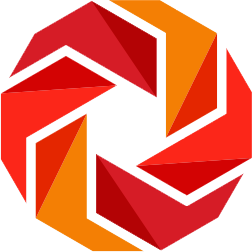A pandemic can change more than just our attitude towards health and cleanliness. COVID-19 has made the leading IT companies in the world leapfrog in to a new model of operation. With more than ninety percent of employees in the IT industry working remotely, business leaders in information technology are warming up to this “new normal” and are taking progressive steps to help employees work better from home.
Creating secure borderless workspaces allows IT professionals to work on critical client data and manage on-going projects from any convenient location. IT companies are re-thinking their cybersecurity systems and project management processes to adjust to the new model of remote working.
People can now work independently and collaboratively from any location. Here are the four most important things IT companies consider when creating a borderless workspace::
MOBILITY
Mobility has already redefined customer engagement and connectivity. It is therefore the most important element in the shift of enterprise system designs and can help focus on the end user. Cloud services hold the answer to anytime, anywhere connectivity and access to data for IT employees. The best part is that information on the cloud may be monitored and controlled remotely to ensure cybersecurity to the fullest.
Empowered with mobility, organizations can tailor information platforms to suit every employee’s specific needs and create a dynamic flow of information to that ensures the right data flows to the right people. Mobility solutions for the workplace can create opportunities for employees and organizations on the whole to acquire new skills, create better collaboration and improve together on the whole.
INFRASTRUCTURE
To enable employees to create an alternative workspace of their own, IT companies need to put in considerable thought about the infrastructure needed. This ranges from issuing pieces of hardware to network facilities and antivirus software. Customizing the technical requirements of each employee according to position can help IT companies cut unnecessary expenditure.
One of the newest approaches to infrastructure in the remote working scenario is “composing your own workspace”. IT companies are issuing budgets to employees to choose and purchase the devices they may need for creating their home workspace. Employees may choose from a range of approved devices to access the enterprise systems. This flexibility of choosing the device you have to work with is appreciated by employees and improves productivity.
SECURITY
Cybersecurity holds prime importance for the information technology industry. It is essential to manage cybersecurity at a granular level with enterprise mobility management tools. Organizations are making efforts to not just control individual access to data but also the location of the end user. This helps to ensure a contributes to the complete security of mission critical client information and ease of access for authorized personnel.
Geo-fencing, for example, which restricts access of corporate resources to a single geographical location only, such as an office building. Disabling device cameras in some locations is another security measure that helps protect client interests. Containerizing corporate resources and encryption of devices can also restrict users to a secure browser and containerized applications when they are accessing enterprise resources.
TECHNICAL AGILITY
Experts believe that the culture remote of working will actually help IT organizations to build better technical agility rather than hinder it. On an average IT companies refresh their hardware every two or three years, however it is always the case that some employees need a device upgrade sooner than others. Collecting and analyzing device usage data in a remote workspace will help companies upgrade and customize device requirements at a micro-level; thus optimizing hardware expenses.
One of the key challenges in building technical agility is the integration of the current system with the new technology. To expedite integration, it is necessary to facilitate ubiquitous access, IT automation for seamless onboarding and well-defined roles. This can be managed with efficiency if the management has access to device usage statistics and can integrate automation, analytics and cognitive capabilities into it.
CONCLUSION
While most IT organizations around the world work hard to create a work environment conducive to remote working for almost their entire workforce – many players in the IT industry have been prepared. Most IT giants have been building processes and systems to facilitate remote working for their employees in the past decade. Experts say, that these IT companies will be in a much better place to deal with the post pandemic situation as well.
Undeniably, working remotely is the new normal for IT professionals around the world and the industry is unlikely to go back to the old business model even after COVID 19 has passed over. It is imperative for IT businesses to start creating a secure and seamless workspace for their employees and get onboard with the work from home culture.
Aarav Solutions is a global product engineering and IT consulting services provider. Our clientele comes from a broad array of industries – Telecommunications, Banking & Finance, Government, Power and Utilities among various other B2B segments. Our goal is to empower businesses in their quest for digital transformation with our experience, innovation and next generation technology.






